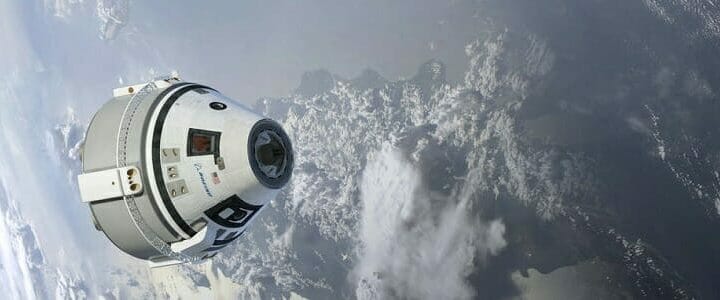Say “Boeing” to most Americans, and they’ll think of commercial jumbo jets. But Boeing’s aspirations aren’t confined to the stratosphere. Later this year, on NASA’s behalf, the company intends to launch a human crew up to the International Space Station.
It’ll be a first for Boeing and for NASA both, and in more ways than one. For the first time since the demise of the space shuttle in 2011, U.S. astronauts will launch into space from a U.S. launchpad. And, for the first time in U.S. space-flight history, it will be a private-sector space vehicle that takes them there.
American industry will replace russian shuttles to International Space Station
The vehicle, Boeing’s CST-100 Starliner, will first undertake an unmanned test flight—possibly in August. Assuming the test goes well, the Starliner’s crewed flight will follow in November. Three astronauts donned space suits in May and did a simulated flight exercise inside a mock Starliner at NASA’s Johnson Space Center in Houston. With other companies planning flights, as well, Boeing isn’t the only American company that will send astronauts into orbit this year.
These flight tests are taking place under NASA’s Commercial Crew Program, which has been working with private aerospace companies since 2010 to come up with cost-effective, reliable means of transporting crews and goods to and from the International Space Station (ISS) and other destinations in low-Earth orbit. They aim to take the reins from Russia’s Soyuz shuttles, which have been U.S. astronauts’ only transit to space since NASA terminated its own space shuttles.
Russia has agreed to keep transporting our astronauts up until the end of 2019, but no further. As such, NASA’s Commercial Crew program is counting on private spaceflight companies to devise vehicles capable of continuously flying astronauts to and from the ISS in the Soyuz shuttles’ place. In 2014, Boeing was one of the companies that was tasked with the job of creating those vehicles.
The Private Sector Ventures Into Space
Boeing isn’t the only company developing spacecraft for NASA; the agency has been outsourcing development of all kinds of vehicles, crewed and crewless, to private businesses in the last 10 years. Boeing does have a long history with the agency. Boeing has been partnering with NASA since the 1990s, when the Boeing-Lockheed Martin collaborative venture United Launch Alliance became NASA’s exclusive developer of heavy rockets.
Flying live astronauts to the ISS is a higher-stakes challenge than flying cargo. Even if Boeing’s test flights goes off without a hitch this year, the company will still need to undergo a final “certification review,” in which NASA verifies that Boeing’s vehicles are mission-ready and decides whether to officially approve them for more missions. Only then will they be ready for ongoing flights.
Boeing hopes for their certifications to go through some time in the first quarter of 2019. But it’s a tight schedule. Maybe too tight: A recent Government Accountability Office (GAO) report warned that continuous technical difficulties and test delays might force NASA to push back certifying Boeing until February 2020.
Nevertheless, slow progress is still progress. Even if GAO’s worst-case forecast turns out to be right, the United States can still look forward to seeing something this year that it hasn’t seen in nearly a decade: a U.S. crew climbing into a U.S. space vehicle and lifting off into space by the power of U.S. rockets. And within two years, at most, NASA will have gone from having no means of its own for lifting astronauts into space, to having several. And that is well worth waiting for.




